Here you will find
1) information on travel to Poland and transport in Warsaw;
2) tips on how to function in Poland;
3) a suggestion for a tour in Warsaw;
4) recommended Hotels&Hostels.
Citizens of the listed countries are not required to be in possession of a visa when entering Poland for less than 90 days.
The best option to reach Warsaw by plan is to use Warsaw Chopin Airport or Warsaw Modlin Airport. Warsaw Chopin Airport is an international airport of the capital of Poland, located in the Włochy district. It is the busiest and the biggest airport in Poland, but not the only one serving Warsaw. The most popular international routes from Warsaw Chopin Airport are London, Paris, Frankfurt and Amsterdam. Gdansk is the most busiest domestic route. The second one is Warsaw Modlin Airport, smaller and relatively new since it was open in 2012, and it is mainly used for low-cost flights. Though it serves Warsaw, it is actually located almost 40 kilometres from Warsaw, in Nowy Dwór Mazowiecki to be precise.
April 2023 there was also third Airport opened – Warszawa-Radom Airport, which is located in Radom (about 110 kilometers from Warsaw).
Travelling from Warsaw-Radom Airport (RDO)
A promotional airport transfer service will be available for passengers on flights to and from Warsaw-Radom Airport until 15 May 2023. Passengers will be able to take advantage of a free shuttle bus ride on the route:
– Chopin Airport – Warsaw-Radom Airport
– Warsaw-Radom Airport – Chopin Airport
The shuttle bus stops in the city center of Warsaw (Dworzec Zachodni), where you can easily get bus, tram or taxi.
The timetable of the shuttle bus is aligned with the current flight schedule. An appropriately marked bus will be waiting for passengers at the Warsaw-Radom Airport Bus Terminal, at stand no. 4, and at the Chopin Airport Bus Terminal, at stand no. 17. The bus will be equipped with an appropriate luggage compartment, where travellers will be able to comfortably stow all their luggage.
Information on booking a seat on the shuttle bus will be provided to you by the airline operating the flight. After booking, travellers will receive a number in the feedback message. The number must be presented to the driver before the start of the trip.
You can find detailed information at the airport’s website here https://www.lotniskowarszawa-radom.pl/en/for-the-passenger/transport-and-parking
You can also take a flight to another biggest Polish cities like Gdansk, Katowice, Krakow, Poznan or Wroclaw. Especially if you travel from Europe, there are many low-cost flights (Ryanair, Wizzair) to the Polish cities. Every airport has a connection (train or bus/shuttle bus) with the main railway station, where you can easily get the train or bus (Flixbus and also local bus enterprises) to Warsaw. Main bus stations in the cities are located near to the main railway stations.
You can plan your train journey on the website https://www.intercity.pl/en/, where you can also buy the online tickets. However, the main railway line in Warsaw is currently undergoing renovation, which causes currents changes in train schedules. Especially, there are many trains, that don’t stop at the Warszawa Centralna (Central Warsaw), which is the main railway station in Warsaw. In case you can’t find any train to Warszawa Centralna, you should try another Warsaw stations (Warszawa Gdanska, Warszawa Wschodnia, Warszawa Zachodnia etc.)
TRAVELLING FROM WARSAW CHOPIN AIRPORT (WAW)
Local bus:
Line 175 – connects Warsaw Chopin Airport and Al.Jerozolimskie (Main railway station
From 4:27 to 22:58 every 15/30 minutes (during daytime it is more frequent)
Line 188 – connects Warsaw Chopin Airport and Metro station Politechnika (city centre)
Buses run from 4:47 to 23:18 → every 10 mins from 06:00-10:00 and then every 20 minutes
Line 148 – connects Chopin Airport with Ursynów-Praga (south/east of Warsaw)
Buses run from 04:34 to 22:35 → every 15-20 minutes
Line 331 – connects Chopin Airport with Metro station Wilanowska
From 06:13 to 17:54 → from 06:13 to 08:56 every 10 minutes, and then again departs from the airport at 13:54 every 15 minutes until 17:54
Night line N32 – connects Chopin Airport with Central Railway Station
From 23:15 to 04:49 every half hour
Ticket prices:
Train: Besides 5 bus lines, Chopin Airport is also connected with the city centre by two Szybka Kolej Miejska lines (Fast Urban Railway):
You can search connection and buy ticket also online.
Airport shuttle bus: A shuttle bus from Warsaw Chopin to Warsaw Centre (Palace of Culture) runs several times daily and there’s also one night departure at 03:40. The first bus from Warsaw to the airport departs at 06:40. The buses are operated by OKbus/ModlinBus so look for buses which have that name written on them. The price of a one-way ticket is 5€ and it includes the transport of luggage as well. You will find more information here
Taxi services: Comparing the prices from other European airports, taxis at Chopin airports are relatively cheap, for example, a ride to the Old Town will cost you approximately ~60 PLN (~13€). So, if you don’t prefer public transportation, get in the cab! There are three recommended taxi corporations: ELE TAXI: +48 22 811 11 11; SUPER TAXI: +48 22 196 22; SAWA TAXI: +48 22 644 44 44 all of them opened 24 hours.
Transfer: Good alternative to taxis is door-to-door transfer, especially if you’re travelling with family or friends. You can save up some money booking it in advance and you won’t get overcharged, which is sometimes often scenario with taxis. You can manage your Warsaw Airport transfer here.
Renting a car at Chopin airport: There are more than 10 car rental offices available at Chopin Airport, among which Avis, Hertz, Sixt, etc. Renting a car is a great idea if you are planning to visit local cities or if you just want to explore Warsaw on your own. You can also book your car online and have it ready for you outside the airport.
TRAVELLING FROM WARSAW MODLIN AIRPORT (WMI)
Airport shuttle bus: Warsaw Modlin is connected to Warsaw city centre by shuttle bus operated by Modlinbus and it runs to Palace of Culture and Science (Plac Defilad):
Train: Warsaw Modlin Airport is linked to Warsaw by trains of company Koleje Mazowieckie. It is important to know that these trains do not depart directly from the airport, but from Modlin train station
You can search connection and buy ticket also online.
Taxi services: Sawa Taxi (+48 22 644 44 44) and Taxi Modlin (+48 600 105 105) are official airport taxi companies and their prices are fixed, but they depend on the city zone of Warsaw. Taxi fare to Warsaw is 119-220 PLN (25-46€) from 06:00 to 00:00 and 149-260 PLN (34-55€) from 00:00 to 06:00.
Transfer: Private door-to-door transfers are great alternative to taxis, in case you don’t want to use public transportation. And they’re cheaper option as well, since the average price (to Warsaw) for person is around 100 PLN (21€). You can manage your Modlin Airport transfer here. Renting a car at Warsaw Modlin airport: Car rental companies like Europcar, Avis and Express have their offices directly at Modlin Airport. But, there’s is always the possibility of renting a car online, and in that way you can avoid the queue.
TRAVELLERS FROM OUTSITE THE EUROPE
In case you’re travelling outside of Europe, you can also consider flying to Berlin, Germany. Both Berlin Airports (Schönefeld, Berlin-Brandenburg) have good connections (S-Bahn or bus) to Berlin main train station (Berlin Hauptbahnhof), where you can get a direct train to Warsaw (Berlin-Warsaw-Express). There is also direct bus (Flixbus) from Berlin-Brandenburg Airport to Warsaw.
TO WARSAW BY CAR
If you plan to go to Warsaw by car (the whole route, or just from the other Polish airports like Krakow, Gdansk, Katowice, Poznan, Wroclaw), we recommend you to learn something about Polish highways. You can find usefull informations on Wikipedia.
BEFORE YOU GO…

Welcome to Poland!!!
Here are some good reasons to visit Poland…
Poland with its 312 000 km² of land and more than 38 millions of population is among the biggest countries in Europe. It is situated in the heart of Europe, and is considered a Central European not an Eastern European Country. So do not call Poland Eastern Europe Country, unless you are a referring to a specific historical concept. It’s capital and the largest city is Warsaw with about 2 millions of people. Other notable Polish towns are Lodz, Krakow, Wroclaw, Poznan and Gdansk.
Since 2004 Poland is a member of European Union. Poland has the eighth largest economy in the European Union – and one of its most dynamic ones.
The dialing code for Poland is +48 and the country code is PL.
Language
Polish is the official language. Foreigners will find it easiest to communicate in English and Russian. A small number of Polish people speak German, Belarussian and Slovakian.
Although it is not easy, mainly because of a terrible array of bizarre vowels and consonant combinations, you may try to learn a few Polish words, as Poles really appreciate the effort.
Here are some usefull examples:
Yes – Tak (tahk)
No – Nie (nyeh)
Good morning – Dzień dobry ((jane-doh-brih)
Good Night – Dobry wieczór (doh-brihvieh-choor)
Hi/hello/Bye – Cześć (cheshch)
Thank you – Dziękuję (jen-koo-yeh)
I am sorry/ Excuse me – Przepraszam (psheh-PRAH-shahm)
Here you are – Proszę (proh-sheh)
How are you? – Jak się masz?(yahk shay mahsh?)
Cheers/Bless you – Na zdrowie (nahzdroh-vyeh)
If you are still not enough:
In Poland you will find only a few dialects, often limited to single regional words. Exceptions are Silesia in the south of the country and Poznan in the west. A separate dialect is also spoken in the border regions with Belarus and Ukraine, as well as on the Slovakian border and in Kashubia near Gdansk.
Time zone and Climate
Poland is in Central European Time (CET). UTC/GMT +1 hour. In Poland the time is shifted forward by 1 hour on 29 March 2020 and 1 hour back on 25 October 2020.
Poland is not as cold as you think. You will not encounter on polar bears on the street. Poland is located in the transitional zone between oceanic and continental climates. Between 27 and 29 June 2020 the sunrise will be 04:25 AM and sunset will be 08:45 PM. The days of 27-29 June 2020 will the beginning of the summer in Poland. Typical summer is warm. In June you may be expected a pleasant temperatures in the range between 11°C and 22.0°C, but exceptions are also possible as low as 3°C and high as 35°, as observed in previous years. Rain is possible all year round. The average amount of rain observed during June in Poland is 78 mm. It is therefore recommended to take both light and warmer clothes. Capes and umbrellas can come in handy.
The weather in Poland is also famous for being constantly changing – so be prepared for different circumstances even though we will try to organize it to be warm and sunny☺
Currency
Poland is not in the eurozone and has its own
currency- Polish Zloty (PLN),
marked with short zł. This means that, only with few exceptions, it is
not possible to pay with Euro or US Dollars.
Approximate currency rate:
1 EUR – 4,80 PLN
1 GBP – 5,55 PLN
1 USD – 4,90 PLN
1 zloty (zł) is 100 groszy (gr). The bills in circulation are 200, 100, 50, 20 and 10 zlotys; the coins are 5, 2 and 1 zloty, and 50, 20, 10, 5, 2 and 1 groszy.
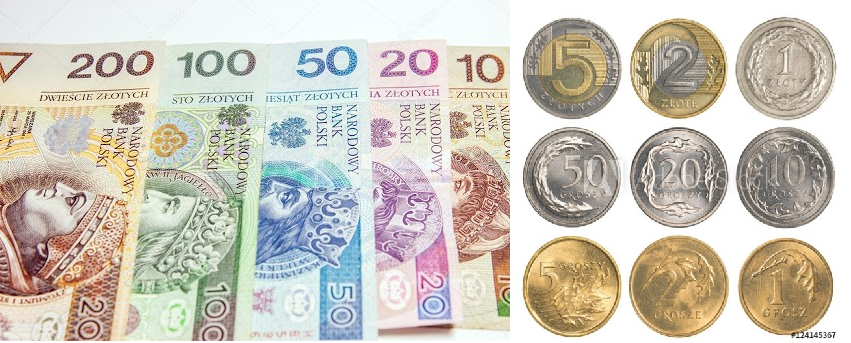
It is wise to have some coins and small banknotes in your wallet. Various newsagents, vendors, or small shops might not have enough cash to give you the change if you pay with a larger denomination.
Foreign currency can be fully exchanged at all border crossings, hotels, banks and exchange offices (called Kantor). Most banks are open Monday – Friday from 8 a.m. to 6 p.m., on Saturdays from 9 a.m. to 1 p.m. Some banks, especially in small towns, are closed on Saturdays and could have shorter work hours on weekdays. Some exchange offices are open 24 hours. Since the money market is free individual banks, currency exchange offices and hotels can exchange money at the price they wish. It is therefore good to consider before you settle for a deal. The exchange office is the best option, since in general it offers better exchange rates. You can find Kantors everywhere, mainly in the city center, larger hotels, train stations, airports, shopping centers.
The best option is to exchange money, but until you get your hands on Polish złoty do not stress. In Poland you can pay with debit or credit card in hotels, practically in all restaurants, in the majority of shops, but to make a purchase at a newsstand or in a small, neighbourhood grocery it would be better to prepare some cash. Most debit or credit cards are accepted i.e. American Express, MasterCard, VISA, MAESTRO and Diners Club. All of them are accepted by major ATMs (called bankomat) in Poland that you can find all over the place. There are more than 22 000 ATMs located in Poland that operate 24 hours a day.
Traveler’s cheques can be cashed only in two Polish banks (PKO BP and Pekao SA).
Electricity
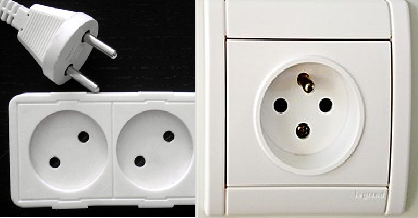
For Poland there are two associated plug types, types C and E. Plug type C is the plug which has two round pins and plug type E is the plug which has two round pins and a hole for the socket’s male earthing pin. Poland operates on a 230V supply voltage and 50Hz.
Culture and Traditions
Poles are generally polite and kind and usually very friendly towards foreigners.
Greeting and good manners
As a greeting, Polish people shake hands, when they meet a new person and a single kiss on the cheek when they are with people they already know (but a kiss is generally reserved for females). Three kisses in the cheek are rather reserved for family gatherings. If you are female do not be surprised when older gentleman may attempt to greet you with a kiss on the hand, perceived as a sign of gallantry and respect. For the same reasons, Polish men open doors and let women always first through the door whether into or out from the restaurant, store, car or through any other door.
Gatherings and invitations
When visiting someone’s home it is the custom to bow during the greeting and introductions, and to bring some flowers to the hostess. Chocolate is also a great choice, or a bottle of alcohol for a host. You should always take your shoes off, unless you will be explicitly told that you can leave them on. If you are invited for a dinner, expect to be fed until your stomach is bursting according to the well known proverb „Guest in the house brings God to the house”, which illustrates legendary Polish hospitality. Those words spoken at the beginning of a visit signify the joy of welcoming a guest in one’s house.
The usual traditional clothing is fine for most occasions. For event held in the evening or parties held in elegant restaurants it is customary to come in evening wear.
In Poland the value of time is relatively high, so punctuality is in good taste.
Local laws and common offences
Driving a car under the influence of alcohol or drugs is strictly prohibited. The drinkdriving limit in Poland is 0.2 (20 milligrammes of alcohol per 100 millilitres of blood – which is lower than in most of the countries. So be careful that you can be charged if you drive even after a drink (a single unit of alcohol). Same rules apply for riding a bicycle.
More information: https://etsc.eu/blood-alcohol-content-bac-drink-driving-limits-across-europe/
There is also a strict approach to drinking in public. Smoking is prohibited in a public space, e.g. public buildings, banks, railway station, public bus/tram stations, restaurants, cafes, etc. It is considered as an offence and if the police spot you, you will have to pay a fine.
While in a car you have to fasten your seat belts that must be used in both front and back seats. It applies also to passengers (even in a taxi).
We are also quite strict about crossing the street – you should cross only at recognised crossing points and only with the green light. Otherwise if you get caught by the police you will be fined.
More information about legal regulations that might be useful.
Public transport
In a public transport you need to have a validated ticket (“Bilet”) at the beginning of the journey. There are usually quite high fines for travelling without a ticket but it can be easily bough at most of the newspaper stands, kiosks, automatic ticket machines and in some cases even on your mobile phone.
Food and Eating out
Poland has a very rich and famous cuisine which differs in every region. While you’re here you have to taste some of the local most famous specialities like the classic Polish pierogi (you will find them in almost every restaurant with many different fillings but the best ones are always made by our grannies). Another typical Polish dish is called gołąbki – traditional cabbage rolls filled with rice and meat, usually served with potatoes. Other national Polish dish is bigos, made from cabbage and sauerkraut, onions and several kinds of meat, zrazy, made from beef wrapped around gherkins served with mushroom sauce and buckwheat; kotlet schabowy (pork chop) served with potatoes and sauerkraut; golonka (boiled and then grilled pork trotters). Soups are an important dish in Poland and are usually thick and filling. Polish cuisine includes about 400 different soups. The best are flaki (tripe) made from beef and entrails, chlodnik which is served chilled and made from sour milk, veal and new vegetables, rosol (bouillon) made from beef and poultry with noodles, barszcz (borsch) made from beetroots with cream, usually served in special mugs with pastries, and grzybowa (mushroom soup) made from wild, edible forest mushrooms.
If you are more into sweets and pastry, you cannot leave without a bite of Polish jam-filled doughnuts (“pączki”), the famous cheesecake (“sernik”) or the traditional apple pie („jabłecznik/szarlotka”) served usually with vanilla ice-cream and/or mounted sweet cream. But the selection of pastries does not end here – you will find inspiring cafeterias and pastry shops (Cukiernia or Kawiarnia) at every corner! The diet is definitely not in the sightseeing programme.
The national alcoholic beverage is vodka, served very cold. The best varieties are Zytnia and Wyborowa. Excellent flavoured vodkas with natural additives include: Zubrowka (with a species of aromatic grass that only grows in Bialowieska Forest), Tarniowka (sloe vodka), Jalowcowka (juniper vodka), Pieprzowka (pepper vodka) and Sliwowica (plum vodka). The quality of Polish beer from the breweries of Zywiec, Warka, Lezajsk and Okocim is on a par with the best beers in the world. Warka beer, for example, was the favourite drink of Pope Clement VIII, who stayed in Poland in the late 16th century.
Polish restaurants have already made a great progress in recent years in terms of quality of food and service. In most of Polish cities you will find a variety of restaurants with international cuisine. While you are eating, the customary tip in restaurants, cafes and taxis is 10-15%. No tips need to be left in self-service restaurants. Tips for porters in hotels and railway stations are up to the traveller.
Lastly, although the tap water is safe to drink, asking for a glass of tap water in some restaurants can be met with broad surprise from the waiter.
Shopping
Polish shops are open Monday through Friday from 10 a.m. to 6
p.m. Supermarkets and hypermarkets and are usually Monday-Saturday from 8 a.m.
to 8 p.m.
In Warsaw there are the following supermarkets:
Carrefour, Auchan, Eurospar, Kaufland, Lidl, Netto, Biedronka. There are also
convenience shops and groceries open 24/7. Late-night shopping can also be done
at petrol stations. Fresh fruit and vegetables are available at the town market
(straight from producers). On Sunday,
most of the big shops are closed.
Health and safety
Poland’s standard of medical service is comparable to this in other EU countries. Citizens of EU countries in case of emergency have access to free medical treatment in Poland.
We hope that your stay in Poland will be pleasant and relaxing. But in case you will need to call an ambulance for example, these are the useful numbers to remember:
112 (from mobile phones)
999 (from stationary phones)
If you need more information about health protection it can be found here.
We assume that you have a guide to Warsaw and can check where the Chopin Museum (https://muzeum.nifc.pl/pl) or the Mari Curie Skłodowska Museum (http://www.mmsc.waw.pl/) are, so we do not suggest any obvious places but quite subjectively choose a few ‘complementary’ ones.
Maciej Aleksy Dawidowski „Alek” took down a plaque with a German inscription from the Mikołaj Kopernik monument on Krakowskie Przedmieście in Warsaw on February 11, 1942. This was one of the most famous actions of the scouts of the Polish underground as part of „small sabotage.” The Germans covered up the Polish inscription on the monument to the great astronomer, „To Nicolaus Copernicus – Compatriots,” placing a plaque there that read in Germen „Dem Grossen Astronomen Nikolaus Kopernikus.”
Maciej Aleksy Dawidowski took part on March 26, 1943, in an operation near the Arsenal to rescue Jan Bytnar „Rudy”. He was shot in the abdomen. The wound turned out to be so serious that it required surgery. He was transported to the Infant Jesus Hospital. He died on March 30. He was buried under a conspiratorial name in Warsaw’s Powazki cemetery. On the same day, „Rudy” died in Wolski Hospital. The remains of both heroes now rest in a common grave at the Powązki Military Cemetery, in the quarters of the Scout Battalion of the Home Army „Zoska.”
You can find the Mikołaj Kopernik monument in the vicinity of Warsaw University near the seat of the Polish Academy of Sciences (Polska Akademia Nauk).
If you want to learn about the history of the Warsaw Uprising there is a museum – https://www.1944.pl/
Of course, there are many places that can be pointed out as symbolic of the history of the Jewish community during World War II, but we have to choose something so maybe – Sewer well – the place of evacuation of Warsaw Ghetto fighters (51 Prosta St.). Here, on May 10, 1943, Simcha Rotem-Ratajzer, alias „Kazik,” a participant in the uprising, led the last group of about 40 insurgents of the Jewish Combat Organization out of the burning ghetto through sewers. If you feel like learning about the centuries-old and comprehensive history of Polish-Jewish relations, please visit the Polin Museum https://www.polin.pl
Monument to the Little Insurgent – Podwale Street. The monument was designed by Jerzy Jarnuszkiewicz in 1946, when he was studying sculpture at Warsaw’s Academy of Fine Arts, while working as a volunteer in the demolition of the city. And it is certainly one of the most famous Polish monuments.
The author himself did not hide his ambivalent feelings about his work years later: I have a dispute with myself about this sculpture. Immediately after the war I succumbed to a sentimental need to repay a debt to my fighting children, but later I began to feel ashamed of this thing. I reproached myself that, albeit unconsciously, I had tampered with my most intimate feelings, neglected form in favor of content, made a botch.
Keret’s House (full name: Hermitage – Keret’s House) – an art installation designed by architect Jakub Szczęsny of Centrala design group, built in 2012 near the intersection of Chłodna and Żelazna streets in Warsaw’s Wola district. The building opened on October 20, 2012, and is located in a 152-centimeter gap between a post-war residential block at 22 Chlodna St. and a pre-war building at 74 Zelazna St. The installation has three levels inside and is designed as a residential building. The location near the footbridge that connected the two parts of the Warsaw ghetto during the German occupation is partly linked to the fate of Keret’s family, who came from Warsaw and were imprisoned in the ghetto during World War II. Keret’s father hid during the occupation for months in a room so cramped that one could neither stand up nor lie down, only sit. When he was extracted from under the ground, he could not walk and had muscular atrophy. The house is also an attempt to fill the spatial void created by the postwar dismemberment of the city by haphazard development.
On the night of the outbreak of the November Uprising, due to the lack of decisions and efficient leadership, although it was possible, we did not kill the Tsar’s brother Prince Constantine. Prince Constantine from 1814 was commander-in-chief of the Polish Army and de facto governor of the tsar in Poland. In 1823 he gave up his rights to the Russian throne, vested in him in the event of the death of his older brother. The reason for his resignation was his marriage in 1820 to the Polish countess Joanna Grudzinska. He took three weddings with her: Orthodox, Catholic and civil. The act of resignation was kept secret.
On the night of November 29, 1830, his person was the main target of an attack by conspirators. However, he managed to escape from the Warsaw Belvedere disguised as a woman. After the outbreak of the November Uprising at the head of the Russian corps, he escaped to Russia and soon died of cholera. There is also a second version of his death, attested to by many diarists, that he was given poison in strawberries with cream.
Nowadays, students can be tormented by Stanislaw Wyspianski’s romantic drama „November Night” from which students usually remember only that it takes a long time to make decisions and sometimes ghosts are involved.
Warsaw was the place where the elections of kings took place. The first free election took place in 1573 in the fields of the village of Kamion. In 1575, in the fields of the village of Wielka Wola near Warsaw, the election of Anna Jagiellonka and Stefan Batory took place. Since then, Wielka Wola has become a permanent site for the election of Polish kings.
Every day at 11:15 a.m. the Warsaw bugle call is played from the Clock Tower (Zygmuntowska) of the Warsaw Castle to the three corners of the world. On September 17, 1939, during the bombing, the clock stopped at this very hour. If we’re already talking about clocks, one of the largest in Europe is located on top of the Monument to Science and Culture (that’s the large Socialist Realist building near the Central Station – Stalin’s gift to Warsaw). The Warsaw bugle call has been played for a relatively short time – it’s just that Warsaw envied the tradition to Krakow.
In the area of the park of Marshal Edward Rydz Smigly (park Na Książęcem) there is an underground rotunda Elizeum. It is located in the slope of the Vistula Escarpment. It is a building of the maison de plaisance (house of pleasure) type. Founded by chamberlain Kazimierz Poniatowski, the king’s brother, it was built in 1776-1778. Currently, the place is an important bat wintering ground in the region, included in the list of the most important European bat wintering grounds.
The Polish archaeological expedition was a rescue mission – the idea was to save as many monuments as possible from being inundated by the rushing waters of the Nile as a result of the construction of the Aswan High Dam. The governments of the Arab Republic of Egypt and the Arab Republic of Sudan invited archaeologists from all over the world to take part in the excavation campaign, which was overseen by UNESCO. Very favourable conditions were offered, that is, the possibility of taking half of the monuments to the country from which the archaeologists came. Kazimierz Michalowski chose a site in Sudan called Pachoras (Arabic: Faras) and it turned out that he actually had a nose for where to dig. Highly recommended.
We are extremely ashamed but there is not even a memorial plaque to which we could direct you. A dozen years ago, the buildings left behind by the Rosa Luxemburg Electric Lamp Works were demolished. The plants themselves went bankrupt as early as 1993. Nevertheless, until 2011, the post-factory buildings were a visible, recognizable point in the landscape of Wola from afar, and Rosa Luxemburg had her place in Warsaw. At the moment there is no commemoration. Rozalia Luxenburg was the youngest of five children of Polish Jews: merchant Elijah Luxenburg and Lina (née Loewenstein). She was born in Zamosc. She began using the name Rosa Luksemburg (Luxemburg) during her university studies. In 1874, the family moved to Warsaw. There Rosa Luxemburg attended the Second Female Gymnasium from 1884 to 1887. While still a student, she joined a youth circle associated with the First Proletariat (the first Polish workers’ party based on the tenets of Marxism, anarchism and the ideology of the Russian Narodna Wola, functioning in the Kingdom of Poland from 1882 to 1886. Its five activists were executed by the tsarist authorities).
The Opening Ceremony of the LLRN6 Conference will be held on 25 June 2023 in Auditorium Maximum hall (located at the main Campus University of Warsaw; Krakowskie Przedmieście 26/28 street) in Warsaw.
The LLRN6 Conference itself (26 – 27 June 2023) will take place in the Collegium Iuridicum II building (Faculty of Law and Administration University of Warsaw) at Lipowa 4 street in Warsaw.
These places are a 10-minute walk from each other.

See the map of hotels near Lipowa 4 [LINK to Google Maps]:
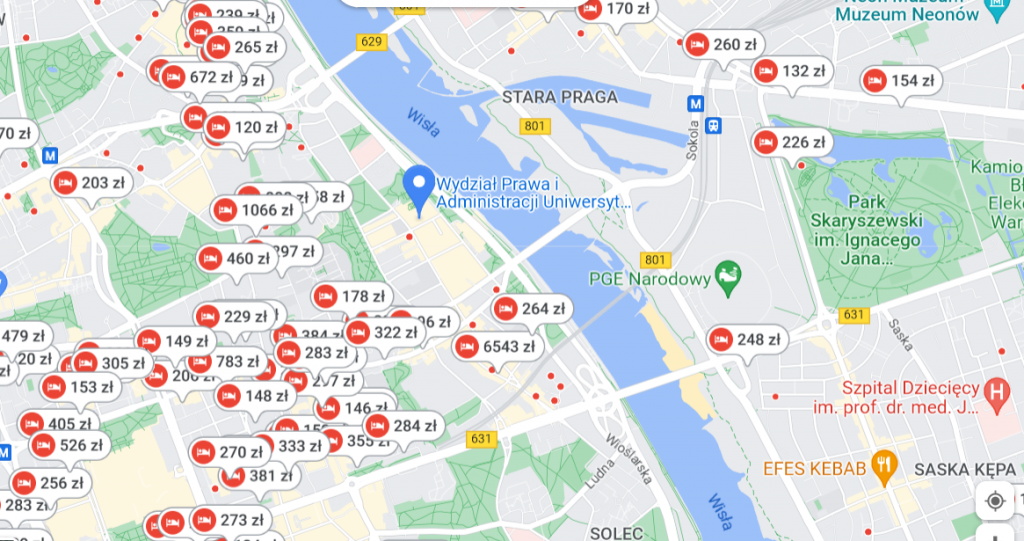

Contat person: Julia Stawicka-Janas/ Grzegorz Kopański
Address: Wybrzeże Kościuszkowskie 31/33, 00-379 Warszawa – 1,6 km from the conference venue
Short description:
HOTEL LOGOS is situated in central district of Warsaw, near the Vistula river, opposite to the National Stadium. This convenient location allows to reach PGE National Stadium, metro station “Copernicus Science Center” or Ateneum Theatre in few minutes. The Central Railway Station is situated barely two kilometers from the Hotel, and the International Airport “Chopin” is within nine kilometers range. Access to the Hotel via public transport
Rate:
1 single room – 198 PLN
2 double room – 240 PLN
3 triple room – 324 PLN
2 doble room LUX – 270 PLN
3 triple room lux – 357 PLN
prices without breakfasts.
breakfasts: 30 PLN/person
Reservations:
– e-mail: rezerwacja@hotellogos.pl
– telephone number: 226228992
– reservation code for LLRN6: LLRN6
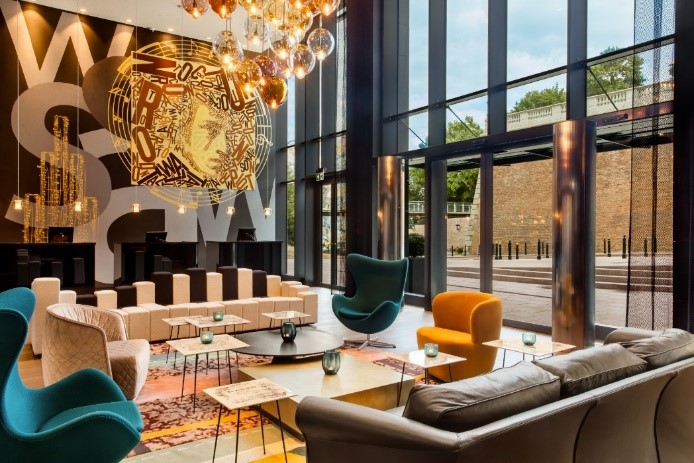
Contat person: : Anna Czaczkowska
Address: ul. Tamka 38, 00-355 Warszawa, – 850 m from the conference venue
Short description:
Motel One Warszawa Chopin, located in Powiśle, offers our guests 333 comfortable rooms in four standards Classic, Classic City View, Corner View and Superior.
We have a spacious and elegant One Lounge at our guests’ disposal. The interiors of the lounge of the new Motel One Warsaw hotel are reminiscent of music, already at the reception desk guests are greeted by elements such as a piano. Our guests can relax by trying one of the drinks offered at the bar and feel the unique atmosphere of the place in line with the motto „Like the Price. Love the Design.”
Rates between 25-27.06.2023 (2nights):
| No breakfast | SGL | DBL |
| Classic | 290,00 PLN | 380,00 PLN |
| Classic City View | 390,00 PLN | 480,00 PLN |
| EZN Corner View | 440,00 PLN | 530,00 PLN |
| Superior / Family | 490,00 PLN | 580,00 PLN |
Breakfast 50,00 PLN / person
Reservations
– e-mail: res1.warchop@motel-one.com
– telephone number: (48) 22 417 60 00
– reservation code for LLRN6: LLRN
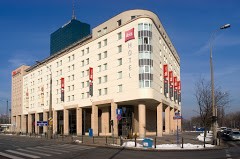
https://all.accor.com/hotel/3714/index.pl.shtml
Contat person: Aleksandra Spodarzewska; Sales Manager; +48 505 198 308; h3714-SL@accor.com
Address: Muranowska 2, 00-209 Warszawa, – 2,3 km from the conference venue
Short description: 3-star hotel is a 10-minute walk from beautiful Warsaw Old Town. Convenient commuting to the conference venue.1 or 2 Bed Rooms with bathrooms + breakfast
Rate: (per 1 night): from 301,50 PLN up to 419,60 – 15% discount = 256,28 PLN to 356,66 PLN
Reservations:
– e-mail: H3714@accor.com
– telephone number: 22 310 10 00
– reservation code for LLRN6: LLRN 2023 (15% discount available)
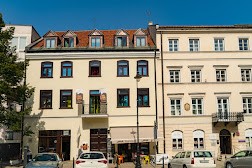
Contat person: Dorota <oldtown@okidoki.pl>
Address: ul. Długa 6, 00-238 Warszawa, –1,6 km from the conference venue
Short description:
Hostel disposes of 1 and 2 bed rooms with bathrooms and apartments as well. We
are located in 18th century building the only one left intact in Warsaw Old
Town. This part of the city is listed as Unesco’s World Heritage Site! We are
surrounded by restaurants and historical sites. Everyday you may join free
walking tours to find out more about unique history of the city. Ask our staff
about anything that interests you – we know a lot about history of Warsaw as
well as about the best party venues!
Rate: from 199 PLN to 260 PLN
Reservations– e-mail: oldtown@okidoki.pl
– telephone number: +48 22 6350763
– reservation code for LLRN6: LLRN 2023

https://domliteratury.com.pl/en/
Contact person: Dominik Ufnal (recepcja@fundacjadl.com)
Address: Krakowskie Przedmieście 87/89, 00-079 Warszawa, –1,1 km from the conference venue
Short description:
1 and 2 bed rooms with bathrooms + breakfast included.
The House of Literature is located in one of the most spectacular places in Warsaw, at Castle Square, opposite the Royal Castle, in two buildings in the Rococo and Neo-Classical styles. It is managed by the Foundation of the House of Literature and Houses of Creative Work. Stay for a few days in the Warsaw Old Town and have the most beautiful places in Warsaw within easy reach. Relax, create or get educated.
Rate: from 250 PLN to 400 PLN (including breakfast)
Reservations:
– e-mail: recepcja@fundacjadl.com
– telephone number: + (48) 22 635 04 04 (Centrala)
– reservation code for LLRN6: LLRN 2023
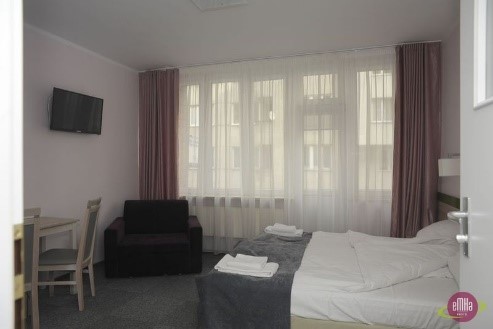
Contact person: Agata Klukowska 797 323 123
Address: ul. Mikołaja Kopernika 3, 00-367 Warsaw, – 900 m from the conference venue
Short description:
Hostel in inner centr of Warsaw, next to the Royal Road, very close to the Old Town, situated on a lovely street named after famous polish astronomer Nicolaus Copernicus. Due to our great localization and attractive prices our hostel makes a perfect place to stay during your visit in Warsaw. 80 meters is a distance you have to walk to get to the street that never sleeps – Nowy Swiat. This Hostel offers you big and comfortable rooms for 1 up to 10 persons. Every room includes LCD TV, most of them with a separate bathroom.
Rate: from 160 to 300 PLN
Reservations:
– e-mail: kontakt@emkahostel.pl
– telephone number: +48 22 657 20 04
– reservation code for LLRN6: LLRN 2023 (15% discount available)